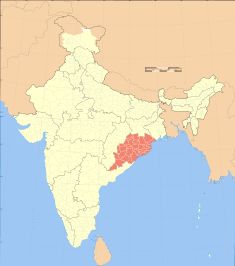We have termed Orissa state of India as the disaster capital of India and the impacts of climate change have been serious. MASS, an NGO, that was formed by a group of Post Graduate Students in 1988, has been working constantly, for the last two decades to study the impacts of disasters on this eastern state of India and has also been facilitating initiatives to overcome these, at some severely impacted zones.  This is the first group in this part of the country, which has been raising alarms about impacts of climate change, since we have been doing that for about decade now.
This is the first group in this part of the country, which has been raising alarms about impacts of climate change, since we have been doing that for about decade now.
According to a people perception survey on climate change impacts on Orissa, 90 percent farmers say that their last five years’ production has been less than the peak production level. The survey clearly attributes this trend to decreasing land productivity and adverse climatic conditions like delay in monsoon or erratic rainfall.
Orissa Report – The preliminary findings of the survey mark the end of first phase of Water Initiatives Orissa’s year long survey started on harvest festival Nuakhai (September 16). The survey has been initiated to gauge the impacts of climate change in Orissa, particularly on water and agriculture sector.
The survey findings come at a time when the 13th United Nations climate change conference – attended by representatives from 192 countries from all over the world – begun in Bali. This conference is significant as recently the global body of 700 scientists established that climate change is unequivocal, accelerating and beginning to affect vulnerable states.
Orissa is one of the most vulnerable states. Many scientific studies have expressed growing fear that Orissa is the hot spot of climate change and since the people of the state are poor thus they are more vulnerable to such changes. Even studies done by the WIO have indicated serious climate change trends and desertification process in Orissa.
WIO’s current survey [Orissa Report] is to know if such climate change fears in Orissa are figment of some people’s imagination or if people really feel the affects. Threateningly, we did not find even one response which has not expressed about adverse symptoms or affects of climate change.
About 90 percent of the respondents were farmers, farm laborers, landless agriculture or natural resource depended rural people. The idea was to get as much raw information as possible which is free from external influence (eg. Media, external exposures etc. which may influence their perception). The other 10 percent comprised of senior citizens, teachers and professors, intellectuals, local experts etc. Though most of the responses were cross-cutting over various themes, still it could be clearly made out that impacts on water, land, agriculture, weather and local bio-diversity etc. have clearly been felt by the people.
Few indicators of climate change – Almost all respondents have reported growing hot days and reducing rainfall. About 30 percent of respondents have indicated changes in local bio-diversity. About 20 percent respondents have cited how traditional methods of forecasting climate and weather is failing these days due to behavioural deviations in birds, animals, plants and environment. Many people have cited extinction of local bio-diversity (pests, insects, plants etc).
WIO has tried to compile these public perceptions into simple formats in its primary Orissa report in five broad categories, i.e., land, water, bio-diversity, agriculture and adaptation.
The report has established the fears that Orissa is a climate change hot spot. The WIO will continue to focus the vulnerability of Orissa to climate changes. Building up from this first phase survey and findings, the campaign will continue till the 14 th UNFCC conference next year. By the next climate change conference in 2008, we hope to come out with a comprehensive status paper which will be first of its kind of report indicating various climate change issues in Orissa. That paper will blend local perceptions with scientific studies & analyses and will come out with clear indicators of how Orissa is truly a hot spot of climate change, what are the threat levels and which are the vulnerable areas and groups. The report will also try to suggest adaptation and mitigation measures.
These kinds of grassroots based studies are important for devising future short term and long term action plans. Most of the climate change studies have highlighted more on the macro or global perspectives of climate change. Such an approach may lead to a false perception that climate change is a global issue and individual or local approaches can do nothing to mitigate those. These kinds of local studies will thwart such misconceptions and initial awareness in people and they will start to contribute their bit in combating climate change apart from helping in making policy decisions.
Key words: Orissa report, Orissa report
